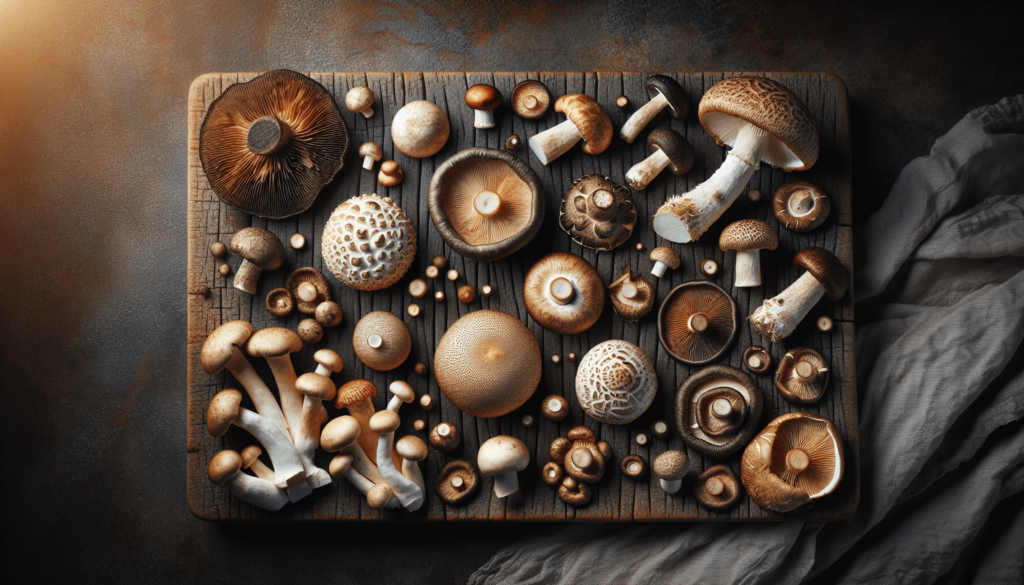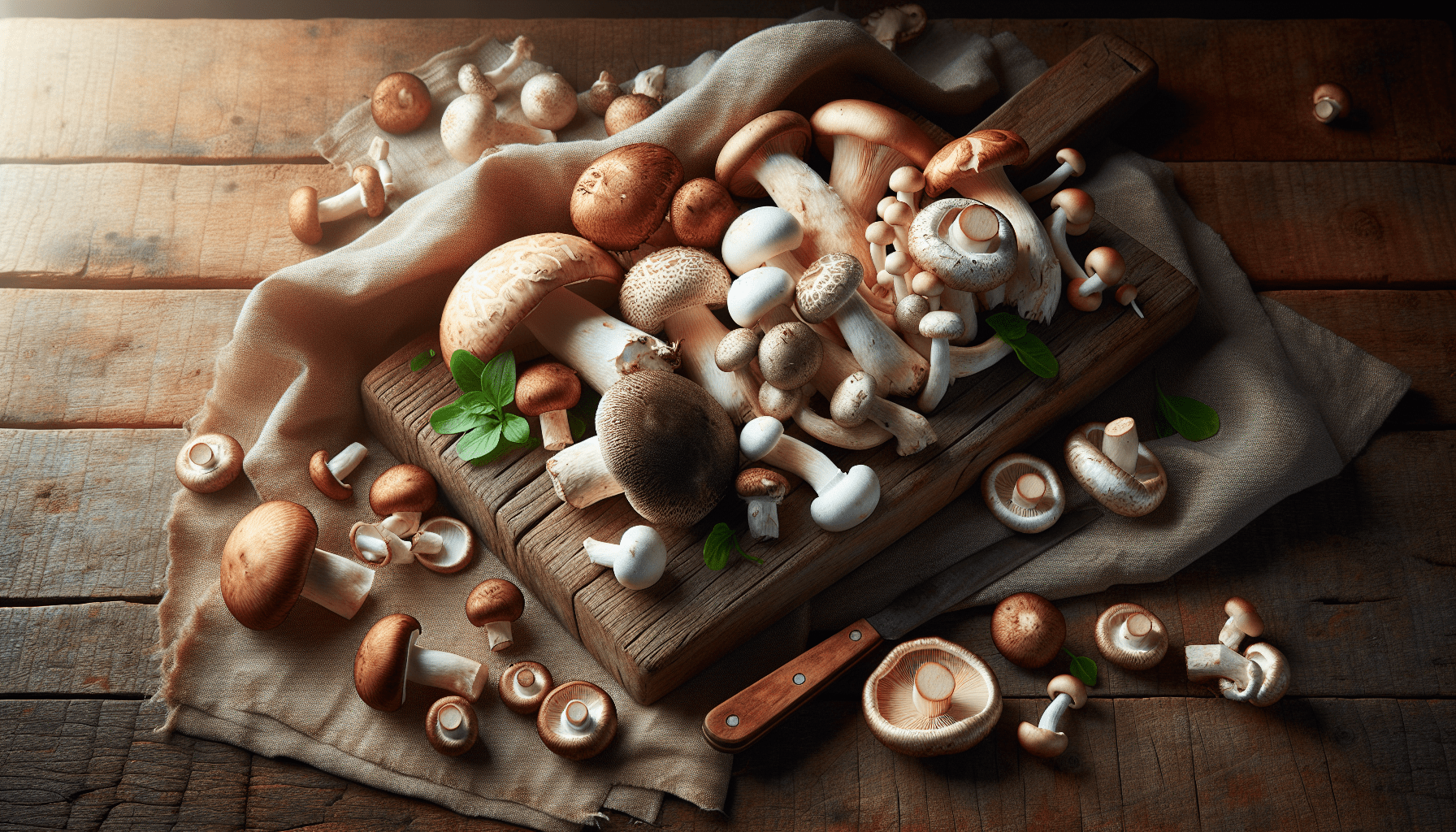Hello there! If you’ve ever wondered whether you can preserve mushrooms without cooking them first, you’re in the right place. In this article, we will explore different methods of preserving mushrooms without cooking them and discuss the benefits of doing so. So sit back, relax, and let’s dive into the fascinating world of mushroom preservation! Can I Preserve Mushrooms Without Cooking Them First?
Have you ever wondered if it’s possible to preserve mushrooms without cooking them first? Whether you’re a forager looking to save some wild mushrooms for later or just have an abundance of store-bought mushrooms that you want to extend their shelf life, this article will explore various methods and tips for preserving mushrooms without cooking them first.

Why Preserve Mushrooms Without Cooking?
Preserving mushrooms without cooking them first can help retain their texture, flavor, and many of their nutrients. Cooking mushrooms can alter their taste and texture, making them less versatile for future recipes. By preserving them raw, you can maintain their original qualities and have a wider range of options for using them later on.
Flavor and Texture Retention
Preserving mushrooms without cooking them allows you to maintain their raw, earthy flavor and unique texture. This can be especially important if you plan to use the preserved mushrooms in salads, sandwiches, or other dishes where the raw flavor and texture are desired.
Nutrient Preservation
Some nutrients and enzymes in mushrooms can be compromised or lost during the cooking process. By preserving mushrooms raw, you can retain more of their nutritional value. This is particularly beneficial if you’re looking to add the preserved mushrooms to dishes where the raw nutrients are essential.
Methods for Preserving Raw Mushrooms
There are several methods you can use to preserve raw mushrooms without cooking them. Each method has its own set of advantages and considerations, so you can choose the one that best suits your preferences and needs.
Dehydrating
Dehydrating mushrooms is one of the most popular methods for preserving them without cooking. This process involves removing the moisture from the mushrooms, which helps prevent spoilage and extends their shelf life.
To dehydrate mushrooms, follow these steps:
- Clean the mushrooms: Wipe the mushrooms clean with a damp cloth or brush off any dirt. Do not submerge them in water, as they can absorb moisture.
- Slice the mushrooms: Slice the mushrooms into even pieces to ensure they dehydrate evenly.
- Dehydrate the mushrooms: Place the sliced mushrooms in a single layer on a dehydrator tray and dehydrate at the manufacturer’s recommended temperature for mushrooms. Dehydrate until the mushrooms are crisp and moisture-free.
- Store the dehydrated mushrooms: Once the mushrooms are fully dehydrated, store them in an airtight container in a cool, dry place.
Freezing
Freezing is another common method for preserving raw mushrooms without cooking them. This method is simple and effective, allowing you to store mushrooms in the freezer for an extended period.
To freeze mushrooms, follow these steps:
- Clean and slice the mushrooms: Clean the mushrooms as you would for cooking, and slice them as desired for future use.
- Flash freeze the mushrooms: Spread the sliced mushrooms in a single layer on a baking sheet and place them in the freezer for a few hours until they are firm.
- Store the frozen mushrooms: Transfer the firm mushrooms to a freezer-safe container or bag, removing as much air as possible before sealing.
- Label and date the container: Write the date on the container and label it with the type of mushrooms for easy identification.
Pickling
Pickling is a unique method for preserving raw mushrooms without cooking them. This process involves marinading the mushrooms in a vinegar-based solution, which adds flavor and extends their shelf life.
To pickle mushrooms, follow these steps:
- Clean the mushrooms: Clean the mushrooms thoroughly to remove any dirt or debris.
- Prepare the pickling liquid: Combine vinegar, water, sugar, salt, and desired pickling spices in a saucepan and bring to a boil.
- Pack the mushrooms: Place the cleaned mushrooms in sterilized jars, leaving room for the pickling liquid.
- Pour the pickling liquid: Pour the hot pickling liquid over the mushrooms, covering them completely.
- Seal and store the jars: Seal the jars with sterilized lids and store them in the refrigerator for at least a few days before consuming.
Canning
Canning is a traditional method for preserving mushrooms without cooking them, ensuring that they stay fresh for an extended period. This method requires some equipment and knowledge of proper canning procedures.
To can mushrooms, follow these steps:
- Clean and slice the mushrooms: Clean the mushrooms thoroughly and slice them as desired.
- Prepare a pressure canner: Fill a pressure canner with water according to the manufacturer’s instructions and bring it to a boil.
- Pack the jars: Pack the clean jars with sliced mushrooms, leaving the recommended headspace at the top.
- Add liquid: Fill the jars with boiling water, broth, or another liquid to cover the mushrooms.
- Seal the jars: Wipe the jar rims, place the lids on top, and screw on the bands until fingertip tight.
- Process the jars: Place the jars in the pressure canner and process at the recommended pressure for mushrooms.
- Cool and store: Once the jars have been processed, allow them to cool, check the seals, and store them in a cool, dark place.
Tips for Preserving Mushrooms Without Cooking
Preserving mushrooms without cooking them requires careful handling to ensure that they stay fresh and safe to eat. Here are some tips to help you preserve raw mushrooms successfully:
Choose Fresh Mushrooms
Start with fresh, high-quality mushrooms to ensure the best results when preserving them raw. Avoid mushrooms that are slimy, discolored, or have a strong odor, as these may be signs of spoilage.
Clean Thoroughly
Clean the mushrooms thoroughly before preserving them to remove any dirt, debris, or bacteria. Use a damp cloth or mushroom brush to clean the mushrooms, and avoid submerging them in water, as they can absorb moisture.
Use Proper Containers
Store preserved raw mushrooms in airtight containers or bags to help prevent moisture absorption and spoilage. Label and date the containers for easy identification, and store them in a cool, dry place away from heat and sunlight.
Follow Recommended Guidelines
Follow recommended guidelines for preserving mushrooms without cooking, whether you’re dehydrating, freezing, pickling, or canning them. Use the right equipment, follow proper sanitation practices, and store the preserved mushrooms correctly to ensure their safety and quality.
Experiment with Flavors
Get creative with flavor combinations when pickling or canning mushrooms. Add herbs, spices, garlic, or other ingredients to enhance the taste and versatility of the preserved mushrooms. Experiment with different types of vinegar or pickling liquids to find your favorite flavor profile.
Monitor Storage Conditions
Monitor the storage conditions of preserved raw mushrooms to ensure they stay fresh and safe to eat. Check for any signs of spoilage, such as mold, off odors, or discoloration, and discard any mushrooms that show these signs.
Use Preserved Mushrooms Wisely
Incorporate preserved raw mushrooms into a variety of dishes, such as salads, sandwiches, soups, pasta, and more. Experiment with different recipes and cooking methods to find the best way to use the preserved mushrooms while retaining their original qualities.
Conclusion
Preserving mushrooms without cooking them first is a great way to extend their shelf life and maintain their flavor, texture, and nutrients. Whether you choose to dehydrate, freeze, pickle, or can raw mushrooms, following proper methods and tips can help you preserve them successfully. Experiment with different preservation techniques and flavor combinations to find the best way to enjoy preserved raw mushrooms in your favorite dishes. Remember to store the preserved mushrooms correctly and use them in a timely manner to enjoy their freshness and unique qualities.

